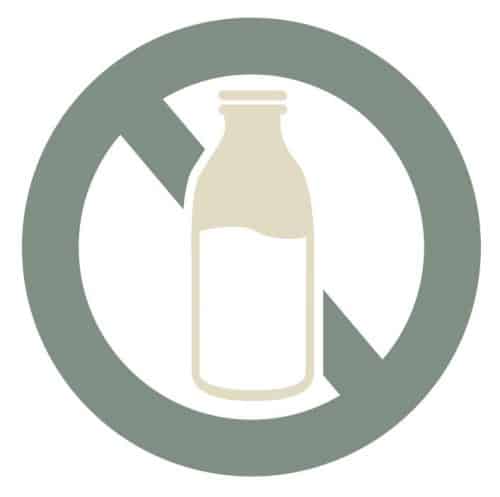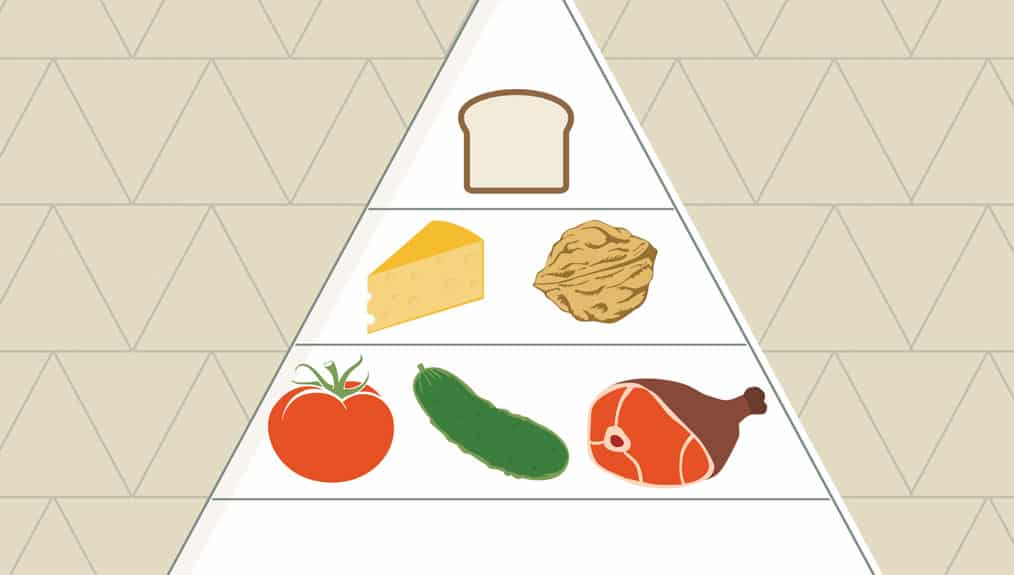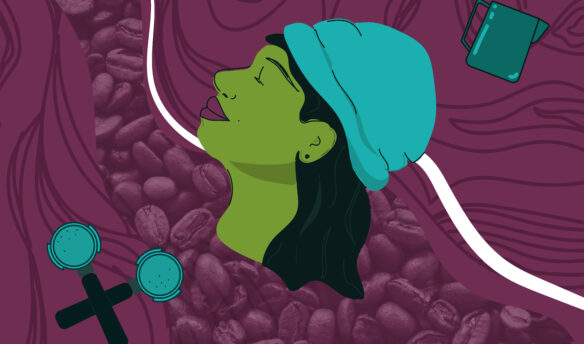[F]ood allergies are tricky business. So are dietary restrictions. If you haven’t dealt with them personally they can be hard to understand—and difficult to find patience for. Queries about non-dairy milk options or the availability of gluten-free pastries might induce cringes and eye-rolls, but an unsympathetic barista or café manager is a surefire way to alienate your customers.
Yes, some customers follow dietary restrictions by choice. But many coffee- and pastry-lovers are forced to make inquiries about ingredients and preparation due to serious—and sometimes life-threatening—allergies. No one likes to be pesky, but they do want to enjoy a latte and scone without feeling apologetic for making sure it won’t put them in the hospital.
As a café owner, it’s your responsibility to communicate to your customers how flexible you can be with dietary modifications. It’s also your responsibility to educate yourself on the ingredients found within your menu offerings and train your staff accordingly. Finding yourself on the serving side of an allergy mishap is scary—for both you and the customer—and demonstrating education about ingredients on your menu and accommodating your guests is also just good customer service.
The More You Know: Allergy vs. Intolerance
What’s the difference between an allergy and an intolerance? Food allergies cause an immune system response where the body mistakes a food as harmful and releases antibodies in defense. Symptoms can manifest in minor ways, like rashes, itching, and hives, or cause severe swelling that can interfere with breathing and cause loss of consciousness.
Food intolerances are also referred to as non-allergenic food hypersensitivities. Intolerances don’t trigger the immune system; their diagnosis is much more common than food allergies. Intolerances stem from multiple causes, including a lack of certain digestive enzymes (proteins in the body that help break down food during digestion). Lactose intolerance is one of the most common food intolerances.
 So, You’re Gluten-Free?
So, You’re Gluten-Free?
First things first: WTF is gluten? Gluten is a protein found in wheat, barley, rye, and spelt (which is often forgotten on the list of gluten violators). Gluten also happens to be responsible for giving dough an elastic quality that results in airy, delicious baked goods, which is why it can be difficult to provide gluten-free alternatives that are both tasty and aesthetically appealing.
>No-fly list: Gluten-intolerant customers look for baked goods that do not contain wheat, barley, rye, or spelt. This also includes ingredients that are varieties and derivatives of wheat, like durum, wheatberries, farina, farro, graham, kamut, and semolina. Malt and brewer’s yeast are also on the list.

All the Milks, or Just Cow’s?
Catering to dairy-free customers covers a range of restrictions and intolerances, including allergies and intolerance to lactose, and the vegan diet. Dairy-free diets exclude anything derived from cow or animal milk. For café owners, accommodating dairy restrictions can be a great way to bring in additional business, as espresso is paired with milk products in many delicious and profitable ways. Allowing customers more options for enjoying your coffee encourages them to return, while perhaps bringing along a dairy-intolerant friend or two.
>Dairy-free alternatives: A variety of plant-based milks can be used in substitution of dairy milk. Some alternative milks perform better when steamed or poured as latte art, especially those formulated for use in the café. Offering a nut milk—almond is a crowd-pleaser—and a non-nut milk, such as hemp, leaves options open for customers who might also have nut allergies.

Is a Coconut a Nut?
Tree nut allergies are some of the most common among food allergies. The reaction is often severe, and can potentially be fatal. In the café, nuts are regularly found in baked goods, plant-based milks, granolas, and pastries. Offering milk options and menu items free of nuts is a wise move for coffee shops and tea houses looking to be allergy-friendly. Your staff should always be aware of which items contain nuts. Every item. Always.
>No-fly list: Walnuts, almonds, hazelnuts, cashews, pistachios, and brazil nuts. Coconuts are recognized by the Food and Drug Administration as a tree nut, though many people with tree nut allergies can safely consume a coconut. A peanut is not a tree nut (it belongs to the legume family!), though a peanut allergy is also a common food allergy that can cause a severe reaction.

What Can a Vegan Eat?
Most people understand that a vegetarian doesn’t eat meat, but explaining veganism often becomes muddled. Vegans do not consume animal products, including eggs, milk, cheese, and butter, as well as other products derived from animals like fur, leather, and wool.
>Vegan-friendly alternatives: Plant-based milk options are all vegan-friendly, leaving lots of choices for vegans on the hunt for a cappuccino fix. Baked goods are more difficult to prepare by vegan standards, requiring the use of a special recipe or vegan supplier. If you offer a full breakfast or lunch menu, consider adding a vegan dish that’s available throughout the day, or build a few dishes that can be made vegan upon request.
If You’ve Got It, Flaunt It
You may already have options in place to cater to your customers with dietary restrictions. That’s great! But do patrons know those options are available? “The best way to make it easy for the customer is to label what options you have,” says Heather Finley, a dietitian and certified allergy specialist. Finley says labeling the menu minimizes stress for customers with dietary concerns. It also has the bonus of making you more visible online for people specifically seeking businesses that can adjust to their needs. “My clients will look up gluten-free bakeries and cafés before they go out,” Finley says.
Businesses that cater to food allergies should proudly display this information, welcoming a broad customer base in so doing.
While plant-based milks and allergy-friendly baked goods don’t need to be your niche, advertising that you’ve got them is a friendly way of letting customers know you won’t be bothered by their ingredient-related inquiries. If you’re open to modifying drinks or dishes to meet dietary restrictions, Finley recommends including a line on the menu to let guests know. “It can be something as simple as, ‘Ask about our gluten-free or dairy-free options,’” she says. Another easy way to communicate dietary friendliness is through simple symbols, noting menu items that are free of allergens or animal products.
Getting the Team On Board
When it comes to allergies and dietary restrictions, there’s no room for error. Food allergies can cause severe and fatal reactions, so it’s vital that your entire team is versed on your menu and how it can be modified to meet dietary concerns and restrictions. While customers will typically know what they can and cannot consume, baristas should know which milks and other ingredients adhere to various dietary restrictions. When a barista can provide detailed descriptions, they’re able to guide guests through the menu to find selections that are both safe and satisfying.
Dietary restrictions can be a hassle for café owners, but they’re also a hassle for the customers who have to navigate every meal around specific guidelines. While it’s not feasible for every business to provide a robust offering of allergy-friendly options, being educated on your menu will go a long way—both in safety and in customer service. Businesses that cater to food allergies should proudly display this information, welcoming a broad customer base in so doing.
—Ellie Bradley is Fresh Cup‘s editor.




 So, You’re Gluten-Free?
So, You’re Gluten-Free?











